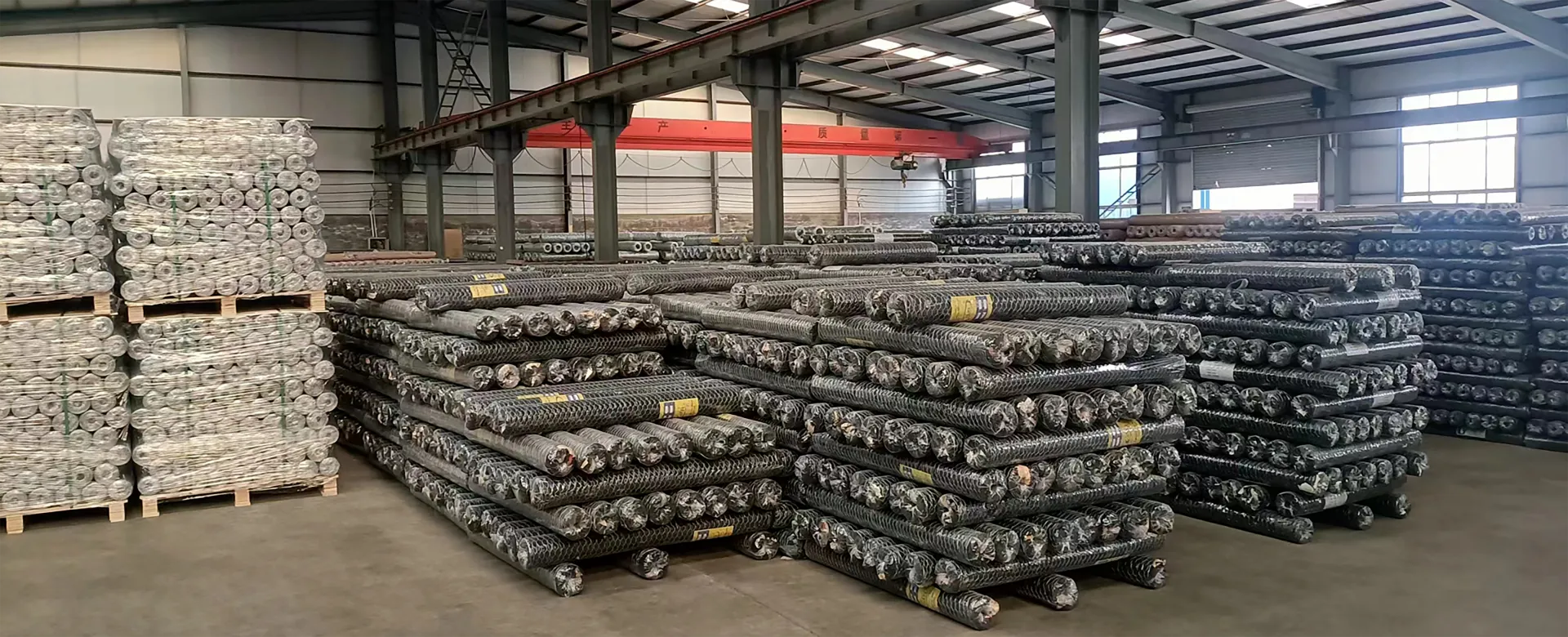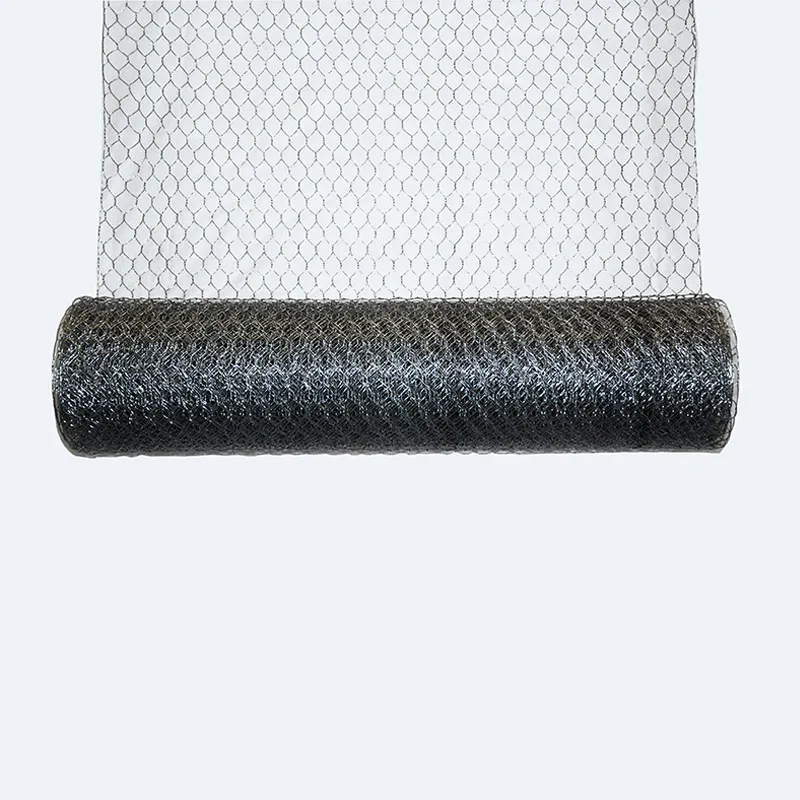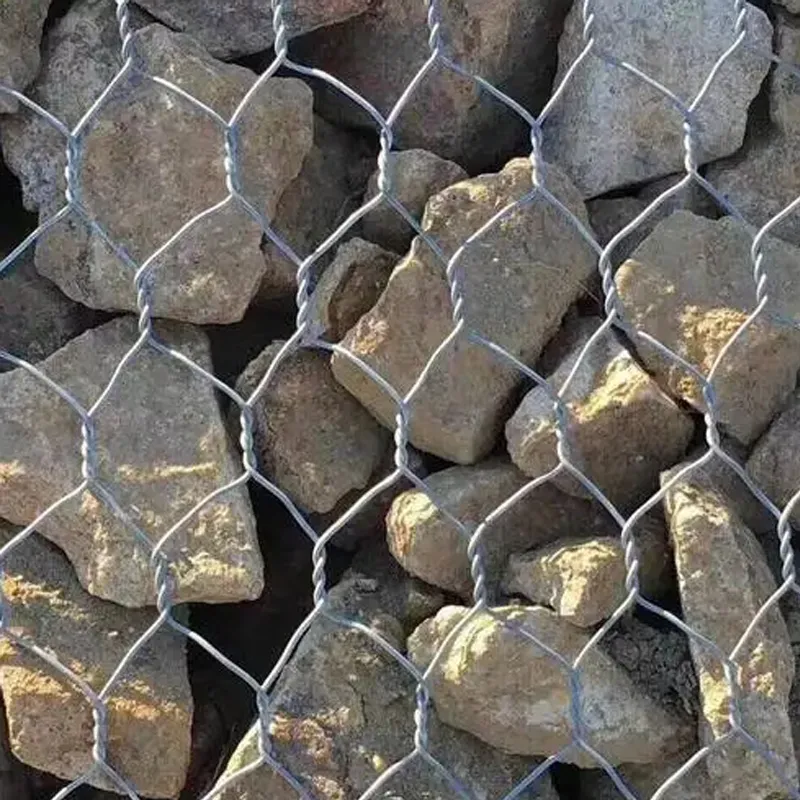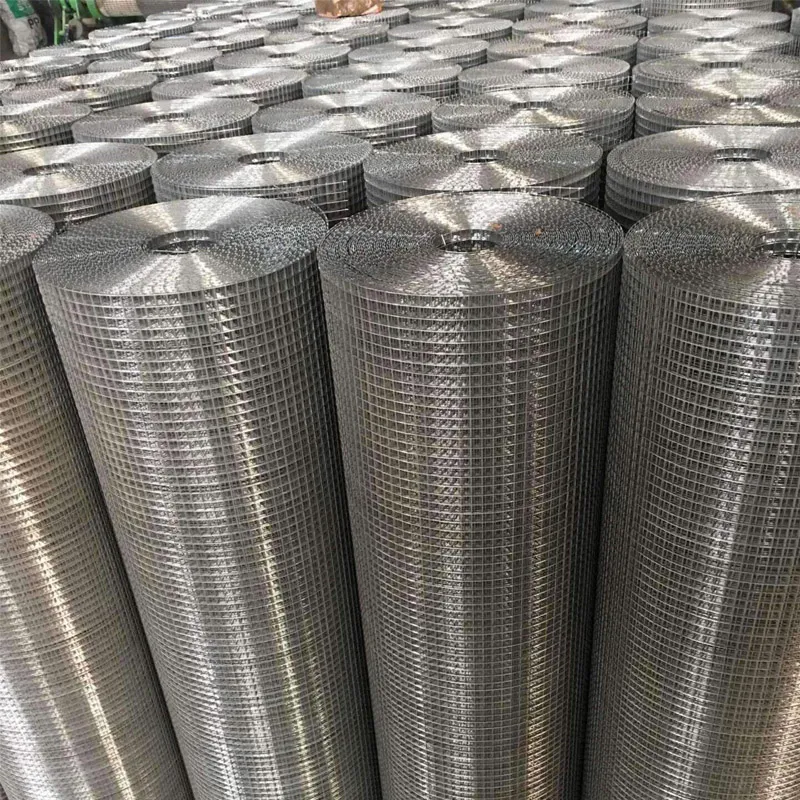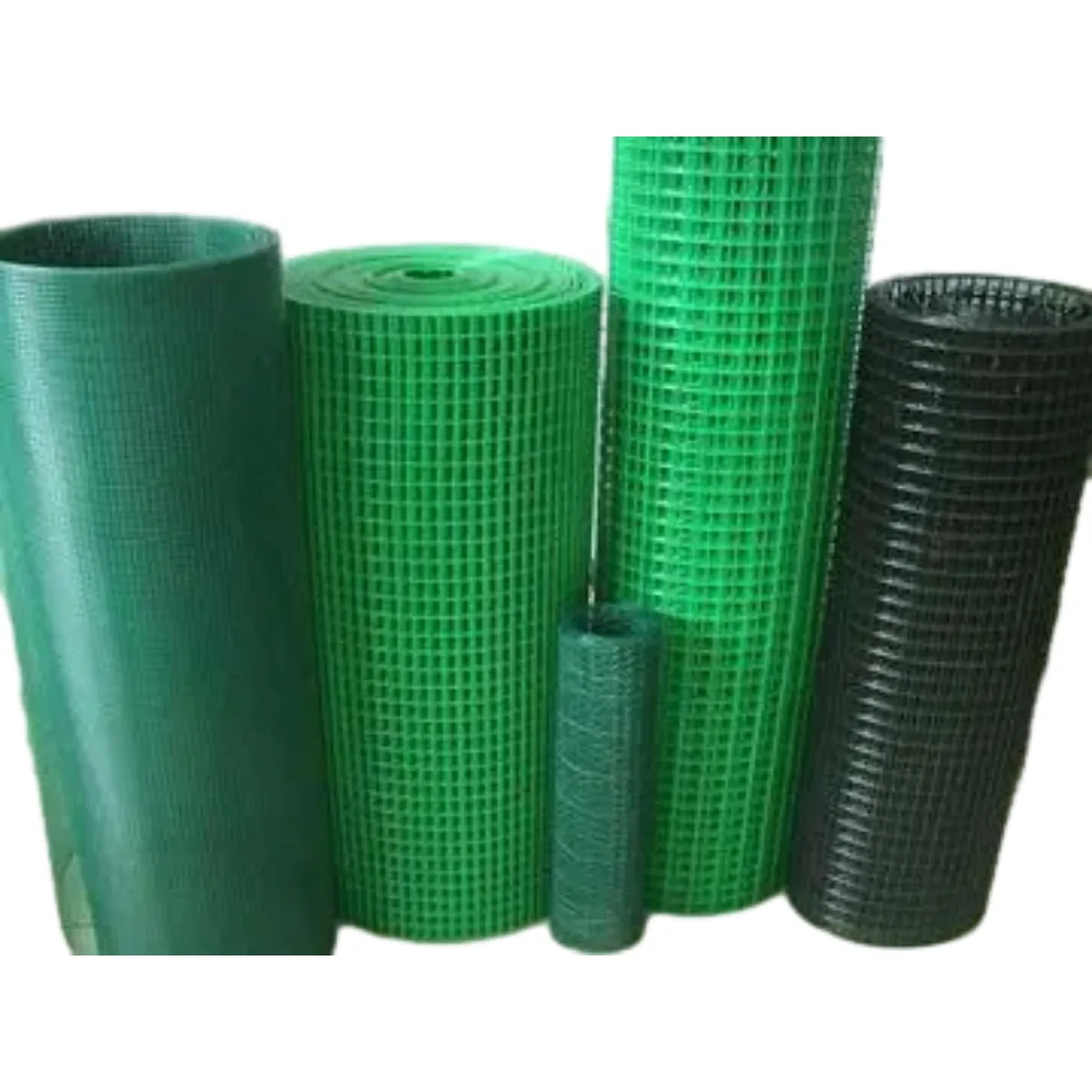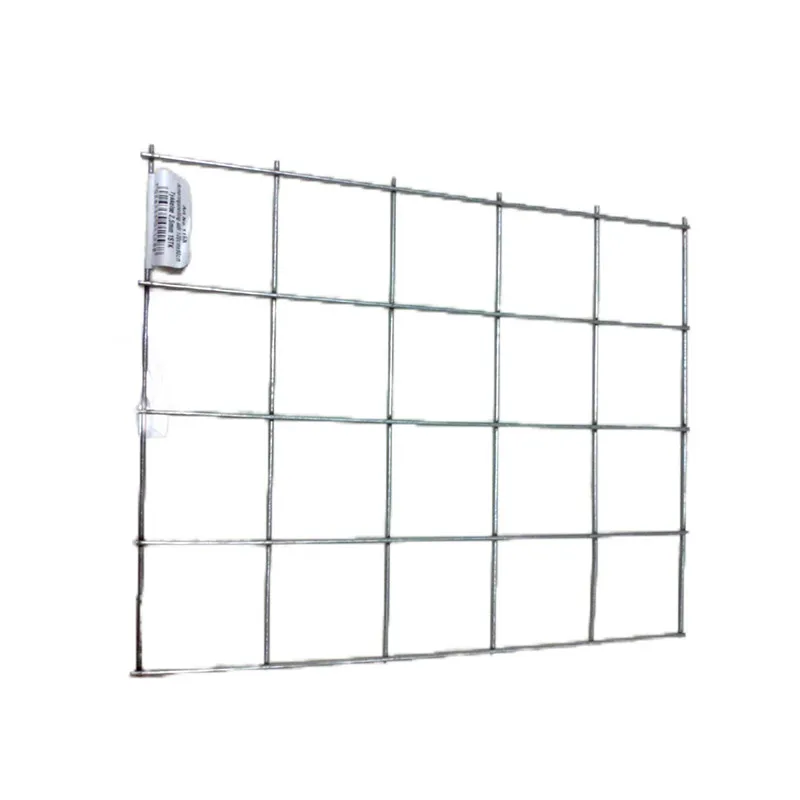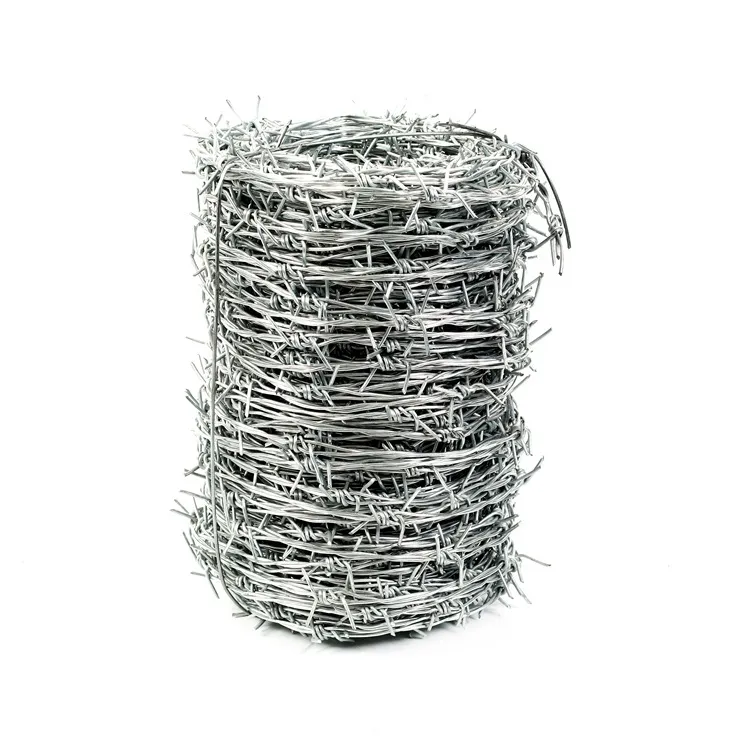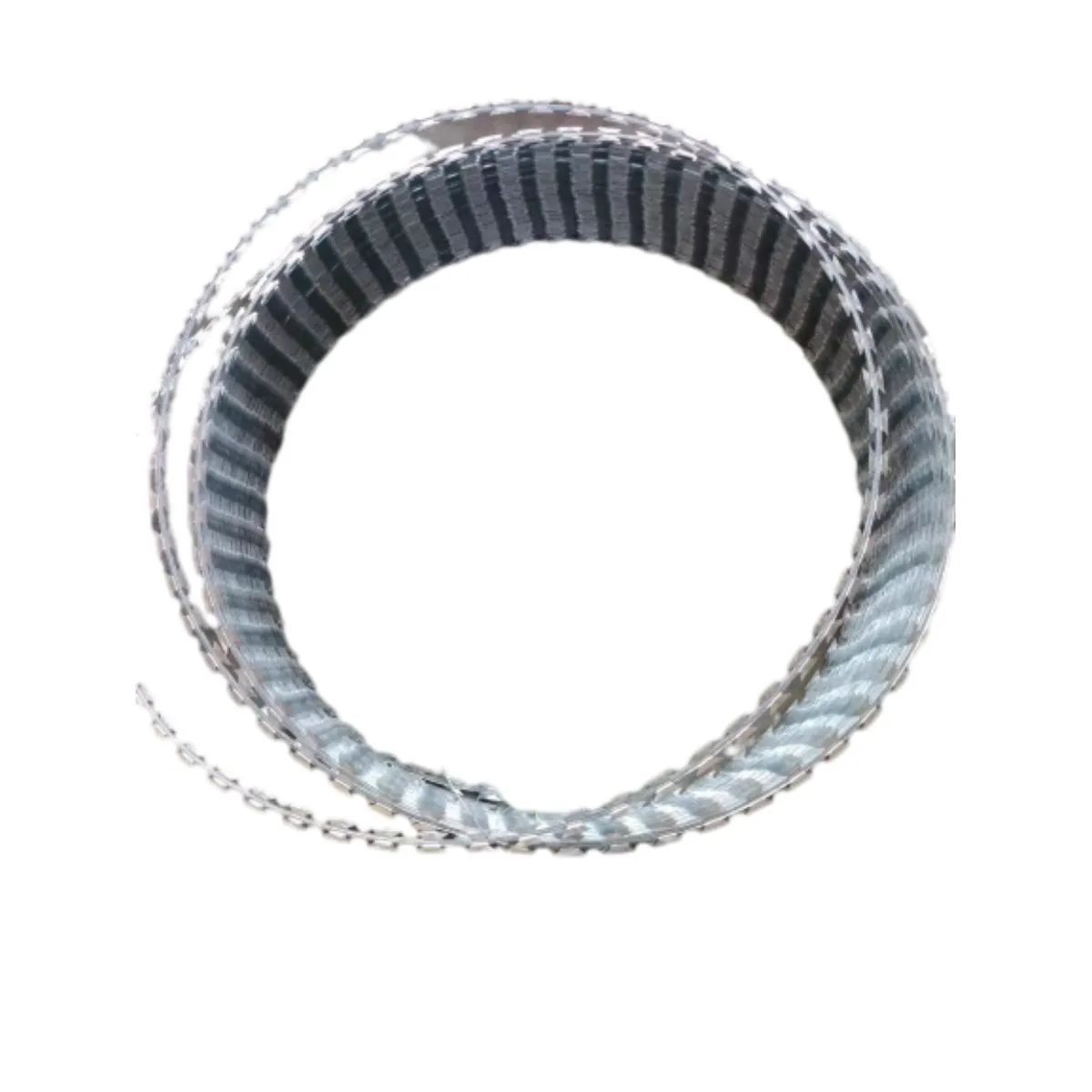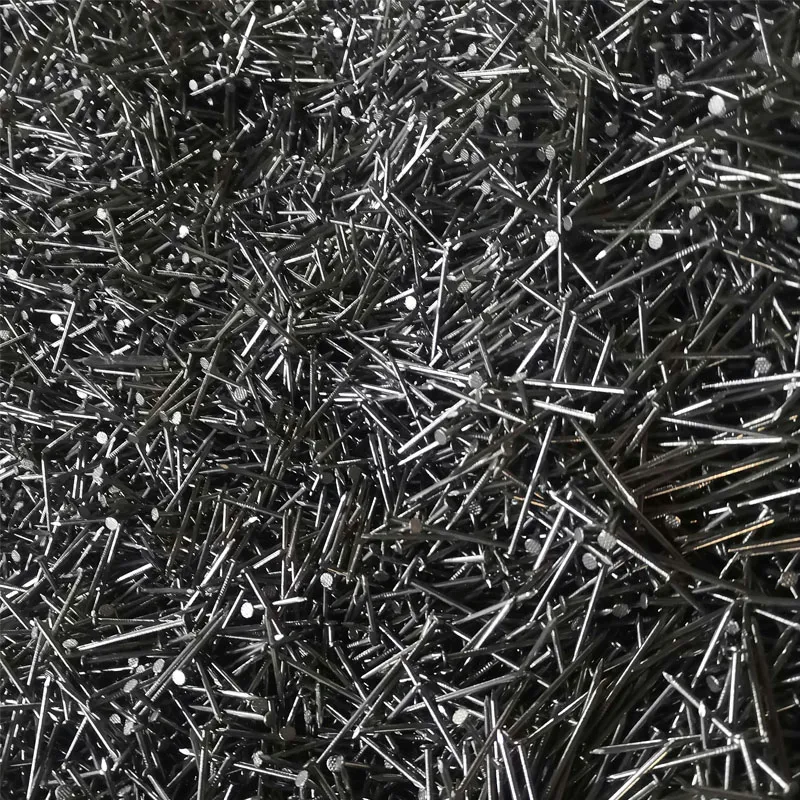Aug . 10, 2025 05:20 Back to list
Binding Wire for Sale | Premium Quality & Best Price Binder Wire
Navigating the Industrial Landscape: The Indispensable Role and Market Dynamics of Binding Wire
In the intricate world of industrial applications, where precision, durability, and reliability are paramount, the humble yet critical component known as binding wire plays an indispensable role. From reinforcing towering skyscrapers and securing agricultural produce to bundling materials for recycling and insulation, its utility spans across an astonishing breadth of sectors. The global market for this essential product is currently experiencing robust growth, primarily driven by burgeoning infrastructure development worldwide, increasing demand in agriculture due to mechanization, and the continuous evolution of industrial packaging and construction methods. According to recent market analyses, the global industrial wire market, which encompasses various types of binding wire, is projected to reach approximately $150 billion by 2028, growing at a Compound Annual Growth Rate (CAGR) of around 5% from 2023. This impressive trajectory underscores the sustained importance and expanding applications of high-quality binding wire for sale. As industries increasingly prioritize operational efficiency, safety compliance, and environmental sustainability, the demand for specialized binding wire with enhanced properties—such as superior tensile strength, excellent corrosion resistance, and prolonged service life—continues to surge. Furthermore, the rising adoption of automated tying machines in construction and baling operations is creating a specific demand for highly consistent and precisely spooled binding wire, emphasizing the need for technical precision from manufacturers. This comprehensive article delves deep into the multifaceted aspects of binding wire, exploring its manufacturing intricacies, diverse application scenarios, profound technical advantages, critical factors for manufacturer comparison, and the crucial elements that define a superior product in today's competitive landscape. We aim to equip B2B decision-makers, procurement specialists, and technical personnel with comprehensive insights, enabling informed procurement strategies and fostering a deeper understanding of this fundamental industrial material's impact on project success and long-term asset integrity.
The prevailing industry trends for binding wire are characterized by a strong emphasis on material innovation, sustainable manufacturing practices, and optimized logistical solutions. Manufacturers are increasingly exploring advanced steel alloys with improved ductility and strength-to-weight ratios to produce wires that offer superior performance under extreme conditions, such as high temperatures, corrosive industrial environments, or significant mechanical stress inherent in large-scale construction. For instance, the demand for advanced galvanized binder wire and robust PVC-coated variants is consistently on the rise due to their exceptional resistance to rust, chemical degradation, and ultraviolet radiation, significantly extending product lifespan in outdoor or harsh settings. Beyond mere coatings, there's a growing interest in self-healing coatings or those infused with anti-microbial properties for specialized applications. Furthermore, the integration of automation and artificial intelligence in manufacturing processes is leading to greater consistency in wire properties, reducing human error, minimizing material waste, and improving overall production efficiency, which directly translates to cost savings for end-users. Supply chain resilience, driven by geopolitical shifts, fluctuating raw material prices, and global events, has also become a critical factor, pushing companies to seek reliable suppliers with robust production capabilities, geographically diversified manufacturing hubs, and diversified sourcing options for raw materials like low-carbon steel rods. The global shift towards circular economy principles means that manufacturers are also increasingly focusing on products that are recyclable or produced with minimal environmental impact, aligning with stringent international sustainability goals and corporate social responsibility (CSR) initiatives. Understanding these evolving trends and their implications is crucial for businesses looking to optimize their operational efficiency, enhance product reliability, meet regulatory compliance, and ensure long-term cost-effectiveness in their strategic utilization of high-performance binding wire. The ability of a supplier to adapt to these trends and offer forward-thinking solutions is a key differentiator in the market.
Deconstructing Binding Wire: Material Science, Precision Parameters, and Performance Metrics
The efficacy, longevity, and ultimate value of any binding wire product are fundamentally determined by its underlying material composition and its strict adherence to precise technical specifications. High-quality binding wire for sale is predominantly manufactured from meticulously selected low-carbon steel, renowned for its exceptional ductility, which is critical for its ease of manipulation, and its inherent workability, making it ideally suited for the rigorous cold drawing process. Common steel grades utilized in its production include Q195 (Chinese standard), SAE 1006, SAE 1008 (American standards), or their equivalent international classifications such as C4D or C6D, which collectively ensure the material possesses the necessary tensile strength for various demanding applications while remaining sufficiently flexible for efficient use in construction, agriculture, and industrial tying without fracturing prematurely. The precise control of carbon content, typically ranging from 0.05% to 0.15%, is vital as it directly influences the wire's hardness and ductility; lower carbon content ensures greater softness and flexibility, which is often preferred for manual tying or automated machines requiring pliable wire. Beyond the intrinsic properties of the base material, the wire's performance is significantly enhanced and its application scope widened through various advanced surface treatments. Galvanized binding wire, for example, is meticulously coated with a protective layer of zinc, providing superior corrosion resistance, an absolute necessity for outdoor, damp, or chemically aggressive environments. This galvanization process can involve hot-dip galvanizing, a method that yields a thicker, more robust, and highly durable coating with excellent adhesion, or electro-galvanizing, which offers a smoother, more aesthetically uniform finish with thinner zinc layers. Similarly, PVC-coated binding wire provides an additional, impervious layer of protection against environmental elements, corrosive chemicals, and physical abrasion, while also offering aesthetic benefits and facilitating color-coding for specific organizational or safety purposes. The judicious selection of the appropriate material and coating directly impacts the wire's operational service life, its resistance to environmental degradation, its overall cost-effectiveness over time, and its suitability for specific project demands, making a thorough understanding of these aspects paramount for informed procurement decisions.
Key Technical Parameters and Their Operational Significance
A deep comprehension of the critical technical parameters of binding wire is absolutely essential for accurately specifying the correct product for any given application. These parameters not only precisely define the wire's physical and mechanical properties but also directly dictate its suitability for specific uses, ultimately ensuring optimal performance, safety, and project longevity.
- Tensile Strength: Measured in megapascals (MPa) or pounds per square inch (psi), this parameter indicates the absolute maximum stress the wire can withstand before undergoing permanent deformation or fracture. For binding wire utilized in rebar tying within concrete structures, a higher tensile strength ensures exceptionally secure connections that can reliably endure the immense stresses induced by concrete pouring, curing, and subsequent structural loads. A typical range for annealed binding wire is 350-550 MPa.
- Elongation: Expressed as a percentage, elongation measures the wire's inherent ability to stretch or deform plastically before fracturing. A higher elongation percentage signifies superior ductility, which is critically important for wire that needs to be bent, twisted, or tied repeatedly, especially in manual applications, without the risk of brittle breaks. Soft annealed binder wire typically exhibits elongation values of 15% or higher, making it highly workable.
- Wire Diameter: This fundamental parameter, typically ranging from 0.7mm to 4.0mm (or 22 gauge to 8 gauge in imperial units), directly determines the wire's load-bearing capacity, its flexibility, and its compatibility with various tying tools or automated machines. Smaller diameters offer greater flexibility for intricate tasks and lighter bundling, while larger diameters provide significantly more strength for heavy-duty applications such as securing thick rebar or large bales. Precision in diameter control is paramount for automated systems to prevent jamming.
- Zinc Coating Weight (for Galvanized Wire): Measured in grams per square meter (g/m²), this parameter directly correlates with the galvanized wire's corrosion resistance and its projected lifespan. A thicker and more uniform zinc coating provides enhanced barrier protection against oxidation and environmental degradation, especially crucial in harsh outdoor, humid, or corrosive environments. For hot-dip galvanized wire, coating weights can range from 20 g/m² to over 200 g/m².
- Coil Weight and Packaging Type: While not a mechanical property, the uniformity of coil weight and the specific packaging type (e.g., small rolls, large coils, spools, cut-to-length) significantly impact operational efficiency in large-scale projects, reducing downtime during material changeovers and facilitating easier handling and storage.
- Service Life Expectancy: This is an estimation of the product's lifespan under specified conditions, often influenced by the type of coating and the environmental aggressiveness. For example, a standard galvanized binding wire might have a 5-10 year life in a general outdoor setting, while a heavy galvanized or PVC-coated variant could last 15-20+ years in more challenging conditions.
These detailed specifications are paramount for procurement professionals and engineers to accurately assess, compare, and ultimately select the optimal binding wire for their specific project requirements. For instance, in large-scale concrete construction, the need for robust yet highly pliable binder wire with consistent mechanical properties is non-negotiable, directly influencing both site safety and the long-term structural integrity of the final build. Conversely, for applications requiring extreme durability in highly corrosive environments, such as within marine infrastructure or chemical processing plants, parameters like maximum zinc coating weight, adhesion quality, and resistance to specific corrosive agents become significantly more critical. Leading manufacturers of binding wire for sale provide comprehensive data sheets (often accompanied by material test certificates) for all their products, allowing clients to meticulously verify compliance with international standards such as ASTM A641/A641M for galvanized steel wire, ISO 9001 for robust quality management systems, or specific EN (European Norm) standards for wire products. This unwavering transparency in technical data not only builds profound user confidence and trust but also emphatically ensures that the final product will consistently perform as expected under real-world conditions, thereby minimizing operational risks, avoiding costly reworks, and maximizing overall operational efficiency throughout its entire intended service life. The subtle yet significant differences in material composition, precise annealing temperature profiles, and uniform coating thickness can profoundly alter the wire's performance characteristics and longevity, underscoring the absolute importance of meticulous specification and stringent quality assurance when sourcing binding wire.
The Art and Science of Manufacturing: Precision Engineering for Superior Binding Wire
The production of high-quality binding wire for sale is a sophisticated and highly controlled metallurgical process that seamlessly combines advanced engineering principles with meticulous, multi-stage quality control. It commences with the rigorous selection of raw materials, primarily premium low-carbon steel rods, which are sourced exclusively from reputable steel mills that strictly conform to international standards such as ASTM A510 (Standard Specification for General Requirements for Wire Rods and Coarse Round Wire, Carbon Steel) or equivalent global specifications. These initial hot-rolled rod coils, typically with a uniform diameter of 5.5mm or 6.5mm, undergo a series of transformative processes designed to achieve the precise physical, mechanical, and surface properties, as well as the exact dimensional requirements, of the final wire product. The entire manufacturing journey is a testament to precision engineering, where each sequential step is critically designed and executed to contribute optimally to the wire's ultimate strength, superior ductility, consistent diameter, and flawless surface finish. Unlike processes such as casting or forging, which are commonly employed for other metal products, the production of binding wire relies heavily on a precise sequence of cold drawing and thermal annealing, often supplemented by various advanced surface treatment methods. The overarching emphasis throughout the entire production cycle is on achieving unwavering uniformity, exceptional consistency, and absolute adherence to exact customer and industry specifications, which are all crucially important for applications where reliability and safety are non-negotiable prerequisites. This comprehensive approach ensures that every meter of binding wire performs predictably and optimally in its intended use.
Comprehensive Manufacturing Process Flow
- 1. Rod Coil Preparation: The elaborate process commences with the meticulous inspection and preparation of the hot-rolled steel wire rods. These rods are initially uncoiled from their large bundles and carefully straightened to ensure a perfectly smooth and continuous feed into the subsequent processing stages. Any residual surface imperfections, such as mill scale or rust, are systematically removed through a multi-step descaling process. This typically involves mechanical descaling (flexing the rod to break off scale) followed by a controlled acid pickling bath (using hydrochloric or sulfuric acid to dissolve remaining oxides) and a rinsing/coating process. This preparatory step is absolutely vital for ensuring the surface integrity of the rod, preventing defects from being drawn into the wire, and optimizing efficiency during the cold drawing phase.
- 2. Cold Drawing: This constitutes the core, transformative process where the diameter of the steel wire is progressively reduced to its final desired dimension. The prepared steel rod is pulled with immense tensile force through a series of precision-engineered dies, each with a bore incrementally smaller than the preceding one. This cold deformation process not only significantly reduces the wire's diameter but simultaneously increases its tensile strength and improves its surface finish due to work hardening (strain hardening). The precision of the carbide or diamond dies, the lubrication system, and the drawing speed are all meticulously controlled to achieve the exact final diameter, consistent roundness, and specific mechanical properties required for the particular type of binding wire. Multiple drawing passes may be required depending on the target reduction.
- 3. Annealing (Softening): Following the cold drawing process, the wire typically becomes hard and brittle due to the significant plastic deformation and internal stress accumulation. To restore its essential ductility, flexibility, and make the wire pliable for a myriad of tying applications, it undergoes a crucial annealing process. This involves heating the wire to a specific, carefully controlled temperature (typically between 700-900°C for low carbon steel) within a controlled, inert atmosphere (such as nitrogen or hydrogen to meticulously prevent surface oxidation), holding it at that temperature for a precise duration to allow for recrystallization of the steel's grain structure, and then slowly cooling it down. This thermal treatment profoundly improves the wire's elongation properties and reduces its internal stresses, making it an ideal binding wire for both manual and high-speed automatic tying machines, ensuring ease of use and preventing premature breakage.
-
4. Surface Treatment (Galvanizing/PVC Coating): For enhanced corrosion resistance, extended lifespan, and specific application requirements, the annealed (or hard drawn, depending on the end product) wire may undergo specialized surface treatments.
- Hot-Dip Galvanizing: The wire is thoroughly cleaned and then immersed in a carefully maintained bath of molten zinc (typically at temperatures around 450°C). This highly effective process creates a robust metallurgical bond between the steel substrate and the zinc, forming a series of iron-zinc alloy layers beneath a pure zinc outer layer. This multi-layered coating is exceptionally durable, highly corrosion-resistant, and abrasion-resistant, capable of lasting for many decades even in severely exposed or corrosive environmental conditions, thus significantly increasing the functional lifespan and value proposition of the binding wire.
- Electro-Galvanizing: A thinner, yet highly uniform zinc coating is applied electrolytically. While offering good immediate corrosion resistance and a smoother, brighter aesthetic finish, it is typically less robust and durable than hot-dip galvanizing but provides a smoother finish.
- PVC Coating: After galvanizing (or sometimes directly on black wire for specific indoor applications), a protective layer of Polyvinyl Chloride (PVC) plastic is extruded onto the wire. This polymer coating provides exceptional resistance to a wide range of chemicals, ultraviolet (UV) radiation, and physical abrasion. Furthermore, it offers electrical insulation and can be custom-colored for aesthetic purposes or for specific safety/identification coding, making the binder wire highly versatile for diverse applications, including fencing, vineyard trellising, or specialized industrial insulation.
- 5. Coiling and Packaging: The meticulously finished wire is then wound onto various forms—coils, spools, reels, or cut into precise straight lengths—depending on the specific requirements of the customer and the intended end-use application. Precision coiling is essential to ensure uniform tension, prevent tangling, and facilitate smooth feeding into automated machinery, which is absolutely crucial for maintaining efficiency on large-scale job sites. Modern automated coiling machines employ advanced sensors to ensure consistent weight and dimensions for each coil. Packaging methods include durable plastic film wrapping, sturdy burlap cloth, robust wooden pallets, or specialized industrial drums, all meticulously designed to provide optimal protection to the binding wire during both transit and prolonged storage, ultimately ensuring it reaches the end-user in pristine condition, ready for immediate deployment.
Rigorous Quality Control and Adherence to Global Standards
Throughout the entire intricate manufacturing journey, stringent, multi-layered quality control measures are rigorously implemented to ensure that every single batch of binding wire for sale not only meets but consistently exceeds demanding international and industry-specific standards. This unwavering commitment to quality includes strict adherence to ISO 9001:2015 quality management systems, which certifies systematic and consistent production processes from raw material intake to final product shipment. Material testing commences at the earliest stage, with comprehensive checks for chemical composition (e.g., carbon, manganese, phosphorus, sulfur content) and initial mechanical properties (e.g., hardness, ductility) of the incoming steel rods, often utilizing spectroscopic analysis and initial tensile tests. During the critical cold drawing phase, advanced in-line laser gauges continuously monitor the wire diameter with micrometer precision to maintain extremely tight tolerances, often as fine as +/- 0.02mm, preventing variations that could lead to operational issues. After annealing, randomized samples from each batch are subjected to a battery of critical tests, including tensile strength tests, elongation tests (using extensometers), and bend tests, to rigorously verify ductility and flexibility—properties that are absolutely crucial for the wire's optimal performance in manual or high-speed automatic rebar tying applications. For galvanized wires, the zinc coating thickness and uniformity are precisely measured using non-destructive magnetic or eddy current methods, guaranteeing consistent and adequate corrosion protection across the entire wire surface. Periodic salt spray tests (e.g., according to ASTM B117 or ISO 9227 standards) are conducted to comprehensively evaluate the long-term corrosion resistance and integrity of coated binding wire, simulating harsh environmental conditions over extended periods. Furthermore, advanced eddy current and ultrasonic flaw detection systems are employed to identify any internal defects or surface imperfections that might compromise the wire's strength or longevity. The ultimate goal of this comprehensive quality assurance system is to achieve near zero-defect output, thereby ensuring that the binder wire will perform exceptionally reliably and consistently even in the most demanding applications, such as large-scale civil engineering projects, critical infrastructure developments, or high-volume industrial baling operations. This meticulous approach to quality control fundamentally underpins the trust placed in our products by discerning B2B clients globally.
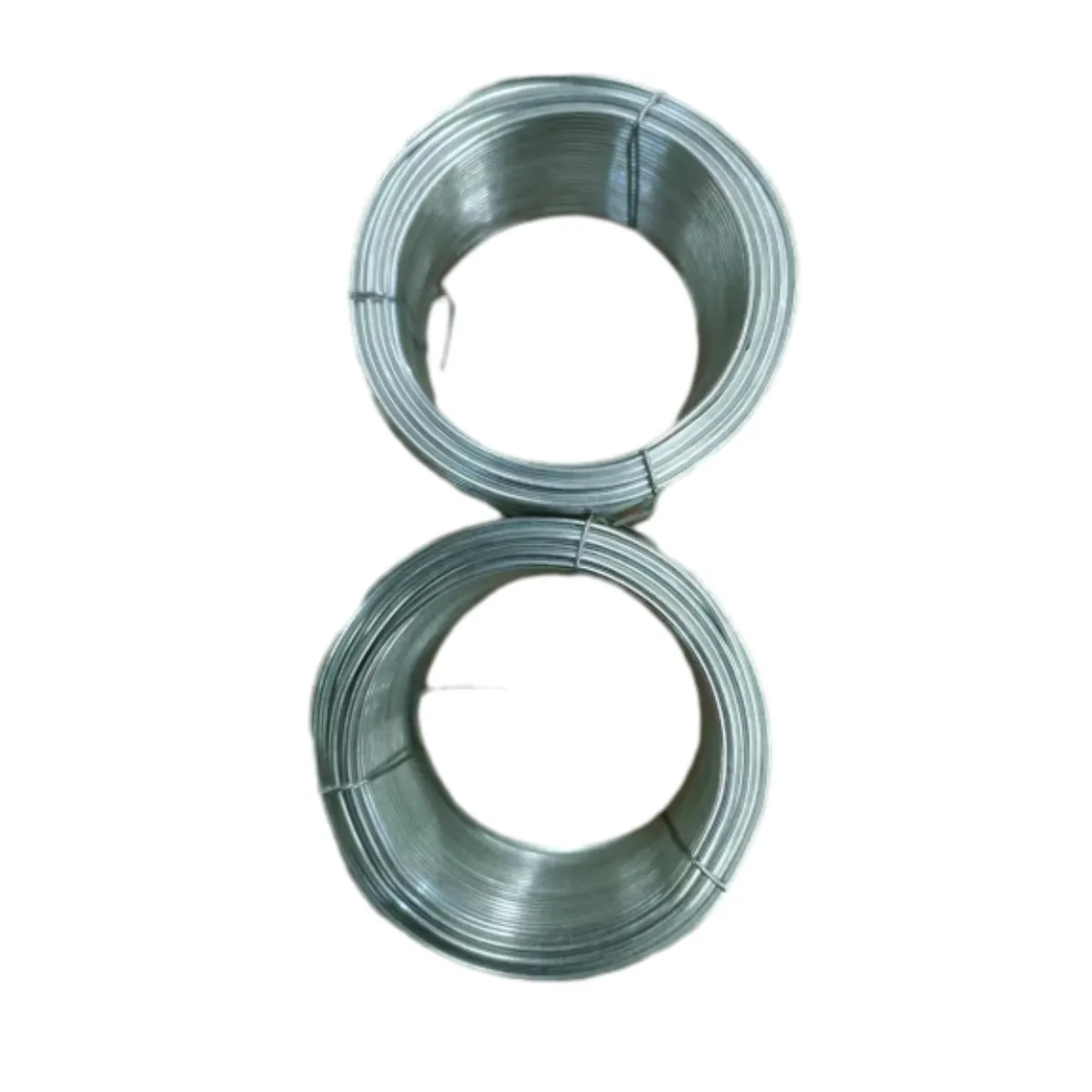
Figure 1: Automated Production Line for Binding Wire Ensuring Consistency and Efficiency Through Precision Control Systems.
These rigorous inspection standards and meticulously managed processes not only guarantee the structural integrity and superior performance of the binding wire but also contribute significantly to its extended service life and reduced total cost of ownership. For industries such as petrochemical, metallurgy, and water supply/drainage, where exposure to highly corrosive agents, extreme temperatures, or continuous moisture is an inherent operational challenge, the ability of binder wire to resist degradation and maintain its physical properties is absolutely paramount. For example, a properly manufactured and heavily galvanized binding wire used to secure insulation on piping in a petrochemical plant can effectively resist corrosive chemicals and high humidity for upwards of 15-20 years, dramatically exceeding the operational lifespan of untreated or poorly coated wire, which might degrade in just a few years. This remarkable longevity translates directly into substantial long-term cost savings for businesses by significantly reducing the frequency of replacements, minimizing labor-intensive maintenance cycles, and preventing potential operational disruptions or safety hazards associated with material failure. Furthermore, the precise control over mechanical properties and dimensional tolerances ensures that the wire performs optimally and seamlessly in automated industrial processes, minimizing machine downtime, preventing costly jams, and maximizing overall operational efficiency, which represents a key competitive advantage for large-scale industrial consumers seeking consistently reliable binding wire for sale. The low friction surface imparted by quality coatings also reduces wear on machinery, extending the life of rebar tying tools and balers.
Versatile Applications and Sectoral Advantages: Where Binding Wire Makes a Transformative Difference
The pervasive and ever-expanding utility of binding wire is evident across a remarkable spectrum of industries globally, with each sector strategically leveraging its unique properties to enhance operational efficiency, bolster safety protocols, and ensure long-term structural durability. Its exceptional adaptability stems from the manufacturer's ability to precisely customize its diameter, tensile strength, and protective coatings, thereby allowing it to meet the highly specific and often rigorous demands of diverse operational environments. A comprehensive understanding of these varied and often mission-critical applications is therefore crucial for businesses looking to meticulously optimize their material selection, enhance project outcomes, and ultimately gain a significant competitive edge in their respective markets. From forming the foundational elements of modern infrastructure to fulfilling the nuanced requirements of highly specialized industrial processes, binding wire for sale consistently proves its profound value through unwavering consistent performance, exceptional reliability, and demonstrable cost-efficiency in a multitude of real-world scenarios.
Construction and Infrastructure Development: The Backbone of Modern Builds
In the dynamic and expansive construction industry, binding wire is arguably most recognized for its absolutely critical and irreplaceable role in concrete reinforcement. It is extensively and systematically used for securely tying rebar (reinforcing bars) together into precise cages or grids before concrete is poured, thereby ensuring the structural integrity, load-bearing capacity, and long-term stability of foundations, columns, beams, and slabs in all manner of commercial, residential, and industrial buildings. The exceptional ductility and pliancy of soft annealed binding wire allows for swift, easy, and exceptionally secure tying, whether performed manually by skilled laborers or with high-speed automated rebar tying machines, which significantly reduces labor time, enhances site safety, and drastically increases overall construction speed and efficiency. For instance, on a typical large-scale commercial high-rise project, hundreds of thousands of individual rebar intersections might be required, each demanding precise and robust connections; the consistency and reliability of the binding wire are therefore paramount to avoid costly structural failures. Beyond its primary application in rebar, binder wire is also widely employed in various fencing applications, where it effectively secures chain-link fences to posts and maintains tension, and in diverse formwork and scaffolding setups to provide essential temporary stability and structural bracing. Furthermore, the superior anti-corrosion properties of galvanized or PVC-coated binding wire for sale are particularly beneficial in outdoor construction sites, especially in coastal regions or areas characterized by high humidity or exposure to aggressive pollutants. These protective coatings effectively prevent premature rust and material degradation that could otherwise compromise structural longevity and necessitate expensive repairs or replacements. The high tensile strength of the wire ensures that the tied structures can reliably withstand the immense pressure of wet concrete during pouring and the subsequent long-term static and dynamic loads, making it an essential element in resilient infrastructure.
Agriculture and Horticulture: Nurturing Growth and Efficiency
The agricultural sector, a cornerstone of global economies, relies heavily on binding wire for a multitude of essential tasks, ranging from securing valuable crops to efficient baling of harvested materials. In vineyards and orchards, highly durable galvanized binder wire is an integral component of modern trellising systems, providing essential structural support for growing vines and fruit trees. This support ensures optimal plant growth, maximizes sun exposure, facilitates efficient pruning, and promotes superior air circulation, all of which directly impact crop yield and overall product quality. Its exceptional weather resistance, specifically against rust and UV degradation, is critically important here, as the wire is continuously exposed to harsh outdoor elements year-round. For large-scale baling applications—whether processing hay, straw, or cotton, or recycled agricultural waste—the consistent strength, uniform diameter, and superior knotting capability of binding wire are absolutely crucial for creating compact, stable, and easily manageable bales that can reliably withstand rigorous handling, stacking, and long-distance transport. The wire's smooth surface and consistent properties also prevent costly damage to sophisticated baling equipment and ensure highly efficient, continuous operation, minimizing downtime and maintenance. Moreover, in horticulture, binding wire finds extensive use in securing protective netting against pests, creating robust support structures for greenhouses and polytunnels, and even in specialized ornamental plant training and landscaping. The non-toxic nature and environmental inertness of certain coatings on binding wire also ensure it is perfectly safe for direct use around food crops and sensitive ecological areas, aligning with modern sustainable farming practices.
Industrial Packaging, Recycling, and General Fabrication: Streamlining Operations
In diverse industrial settings globally, binding wire is an indispensable material for a wide array of packaging and bundling applications. It is used to securely bundle various materials, ranging from heavy timber and rolls of textiles to compacted metal scrap, paper, cardboard, and other bulk goods. Its robust strength and high tensile properties ensure that even very heavy and irregularly shaped items are securely bundled for safe storage, efficient handling, and damage-free transportation, thereby minimizing the risk of material loss, breakage, or safety incidents during logistics. In high-volume recycling facilities, specialized baling binding wire is used in powerful compacting machines to compress massive volumes of cardboard, plastic, paper, and metal waste, efficiently transforming them into dense, manageable bales for further processing and cost-effective transport. The wire's exceptional ability to withstand extreme compression forces and maintain its integrity without premature breaking is paramount in these high-throughput, demanding operations, where machine reliability and throughput are key performance indicators. Furthermore, in general fabrication, manufacturing assembly lines, and various workshops, binder wire serves as a versatile temporary or even permanent fastener for a myriad of components, facilitating complex assembly processes or ensuring the temporary integrity of intricate structures before final welding, bolting, or riveting. The availability of diverse wire diameters, specific tensile strengths, and various packaging configurations allows for highly tailored and optimized solutions across these diverse industrial applications, making high-quality binding wire for sale a highly sought-after commodity for its exceptional versatility, consistent reliability, and significant contribution to operational efficiency and safety across the industrial landscape.
Specialized Industries: Petrochemical, Metallurgy, and Utilities – Extreme Environment Performance
Beyond conventional uses, high-performance binding wire finds critical and often irreplaceable applications in highly specialized and exceptionally demanding industrial environments, such as large-scale petrochemical plants, advanced metallurgical facilities, and extensive municipal water supply and drainage systems. In vast petrochemical complexes, where constant exposure to highly corrosive chemicals, fluctuating high temperatures, and continuously humid conditions is a routine operational challenge, specialized coatings like heavy galvanized or robust PVC-coated binding wire are absolutely essential. They are extensively used for meticulously securing critical insulation on high-temperature pipes and pressure vessels, bundling sensitive electrical cables, and fabricating custom support structures that must exhibit exceptional resistance to aggressive chemical attacks, thermal cycling, and continuous moisture without any degradation or structural compromise. The exceptional anti-corrosion properties of such specifically engineered wires significantly extend the operational life of critical infrastructure components, thereby directly contributing to enhanced asset integrity, reduced maintenance costs, and improved overall plant safety and reliability. In advanced metallurgical operations, high-temperature resistant binding wire might be specifically designed and used for securely bundling raw materials or semi-finished products within high-temperature furnaces, or for temporary fastening in precision foundry operations, where conventional wires would rapidly fail due to extreme heat and thermal stress. For municipal water supply and intricate drainage systems, stainless steel binding wire (for ultimate corrosion resistance) or heavily galvanized variants are precisely employed for securing components within wastewater treatment plants, reinforcing concrete pipes in extensive underground environments, or fastening mesh screens, where constant moisture, exposure to sewage, and potential aggressive chemicals necessitates maximum long-term corrosion resistance and material durability. The unparalleled ability of specialized binding wire to consistently maintain its structural integrity, resist environmental deterioration, and perform reliably in these extraordinarily challenging scenarios unequivocally underscores its indispensable value in safeguarding critical operations and ensuring long-term infrastructural resilience and public safety. Its indirect contribution to energy efficiency is also notable, particularly in insulation applications within power plants or industrial furnaces, where effective tying ensures no thermal bridges or insulation gaps, thus optimizing energy consumption and reducing operational costs.
Achieving Competitive Advantage: The Technical Superiority and Engineered Benefits of Modern Binding Wire
In a global market increasingly driven by the twin imperatives of efficiency and unwavering reliability, the technical superiority of binding wire is not merely a desirable feature but an absolute strategic imperative and a profound competitive advantage. Modern manufacturing processes, coupled with continuous advancements in material science and metallurgical engineering, have consistently elevated the performance benchmarks for binding wire for sale, enabling it to consistently meet and often exceed the increasingly rigorous demands of contemporary industrial and commercial applications. Beyond basic functional performance, the true key to competitive edge lies in inherent characteristics such as significantly enhanced durability, unparalleled corrosion resistance, remarkably consistent mechanical properties, and superior ease of application and handling. These attributes collectively translate into substantial operational savings, reduced project risks, and significantly improved long-term project outcomes for the end-user. Businesses that strategically invest in technologically advanced and meticulously engineered binding wire can confidently expect dramatically reduced operational downtime, minimized material waste, extended service life for their critical applications, and improved overall safety, all of which directly and positively impact their bottom line and return on investment. This focus on technical excellence ensures that the binding wire itself becomes a value-adding component, rather than just a commodity.
Material Science and Unyielding Durability: The Foundation of Performance
The fundamental cornerstone of superior binding wire lies in its meticulously controlled material composition and the sophisticated metallurgical treatments it undergoes during its entire production lifecycle. High-quality binding wire is specifically manufactured from carefully chosen grades of low-carbon steel, such as SAE 1006 or SAE 1008 (or equivalent international standards like C4D), which are selected for their optimal and critical balance of inherent ductility (malleability) and robust tensile strength. The precise control over the carbon content (typically maintained within a narrow range of 0.05% to 0.15% to ensure desired properties) during steel production is crucial as it directly influences the wire's ultimate hardness, its formability, and its ductility; a lower carbon content generally ensures greater softness and flexibility, which is often highly preferred for ease of manual tying or for optimal performance in high-speed automated machinery that requires pliable wire. Through carefully orchestrated and precisely controlled cold drawing processes, the steel's internal microstructure and grain structure are refined and elongated along the drawing axis, which inherently increases its ultimate tensile strength (UTS), yield strength, and significantly improves its fatigue resistance against repetitive stress. The subsequent annealing process, a critical thermal treatment conducted under stringent controlled atmospheric conditions (often using inert gases like hydrogen or nitrogen to meticulously prevent surface oxidation and scale formation), further enhances the wire's ductility by inducing recrystallization of the steel's grain structure, allowing for remarkable elongations, frequently exceeding 20-25% before fracture occurs. This synergistic combination of judicious material selection, precise cold mechanical working, and controlled thermal treatment results in a binding wire that can consistently withstand significant bending, twisting, and sustained tension without premature breaking or brittle failure. This provides unparalleled durability and reliability in even the most demanding applications, such as large-scale rebar tying in seismic zones, heavy-duty industrial baling operations, or complex formwork structures. Moreover, the unwavering consistency of these critical mechanical properties across an entire production coil, and indeed across different batches of binder wire, is a definitive hallmark of a truly superior product and a reputable manufacturer.
Advanced Coating Technologies: Unrivaled Protection and Longevity
Beyond the intrinsic strength and mechanical properties of the steel core, advanced coating technologies provide a critical and indispensable layer of protection that significantly extends the functional service life of binding wire, particularly when deployed in challenging and aggressive environmental conditions. Galvanization, especially the hot-dip galvanizing method, remains the universally recognized gold standard for achieving superior corrosion resistance. By immersing the meticulously cleaned and prepared wire in a bath of molten zinc at high temperatures (typically around 450°C), a complex series of intermetallic iron-zinc alloy layers are formed, culminating in a pure zinc outer layer. This multi-layered coating creates a remarkably robust metallurgical bond that is exceptionally resistant to both general corrosion and physical abrasion. The precise thickness of this zinc coating directly correlates with the wire's expected lifespan in corrosive conditions; for instance, a heavy galvanized coating (e.g., 200-300 g/m² or higher) can provide several decades of unparalleled protection against rust, even when continuously exposed to highly corrosive saline environments (like coastal regions) or consistently high humidity. For applications demanding even greater resilience against a broad spectrum of chemicals, intense UV radiation, or where aesthetic customization is desired, PVC (Polyvinyl Chloride) coating is expertly applied, often over a pre-galvanized wire. This polymer layer acts as an impervious, highly effective barrier, meticulously preventing any direct contact between the underlying wire and corrosive agents, while also providing excellent electrical insulation and a smooth finish that actively reduces friction and wear on tying machinery. The synergistic combination of inherent steel strength with these advanced protective coatings means that binding wire for sale can be reliably and confidently deployed in environments as demanding as offshore petrochemical platforms, marine construction projects, industrial wastewater treatment facilities, and advanced agricultural settings, where environmental degradation would rapidly compromise the integrity of untreated wire. This significantly extended longevity directly translates into reduced maintenance cycles, lower replacement costs, and enhanced long-term operational reliability for end-users.
Precision Engineering and Unwavering Consistency: Optimizing Operational Efficiency
The definitive hallmark of a high-performance binding wire manufacturer lies in the unwavering consistency achieved through the implementation of cutting-edge precision engineering and sophisticated process control. State-of-the-art production lines, equipped with advanced computerized numerical control (CNC) systems, real-time sensing technologies, and integrated automation, meticulously ensure that every single millimeter of wire produced adheres to exact, pre-defined specifications with unparalleled accuracy. This encompasses precise control over wire diameter, minimizing even minute variations that could lead to costly operational issues such as jamming or premature wear in high-speed automated machinery; consistent tensile strength across the entire length of the coil, guaranteeing reliable and predictable performance in every single tie; and perfectly uniform annealing throughout the wire, ensuring consistent ductility and flexibility from start to finish. For instance, modern automated rebar tying machines and industrial balers demand extremely consistent wire properties to operate at peak efficiency and minimize downtime. Even slight variations in wire diameter, stiffness, or surface friction can lead to frequent jams, increased machine maintenance, and significant production delays, all of which translate directly into substantial financial losses for large-scale operations. Leading suppliers of binding wire for sale employ sophisticated laser micrometers for continuous, non-contact diameter measurement, advanced eddy current testing for real-time defect detection, and optical inspection systems to ensure that only perfectly uniform and structurally sound wire reaches the market. This unparalleled level of consistency translates into profound operational benefits for end-users, including dramatically reduced material waste, faster project completion times due to uninterrupted work flows, enhanced worker safety by minimizing manual adjustments, and improved overall reliability of the final application structure or bundled material. This unwavering commitment to precision engineering and quality consistency unequivocally differentiates premium binding wire from lesser alternatives, offering superior long-term value through unparalleled reliability and consistently optimal performance across all its diverse and demanding applications.
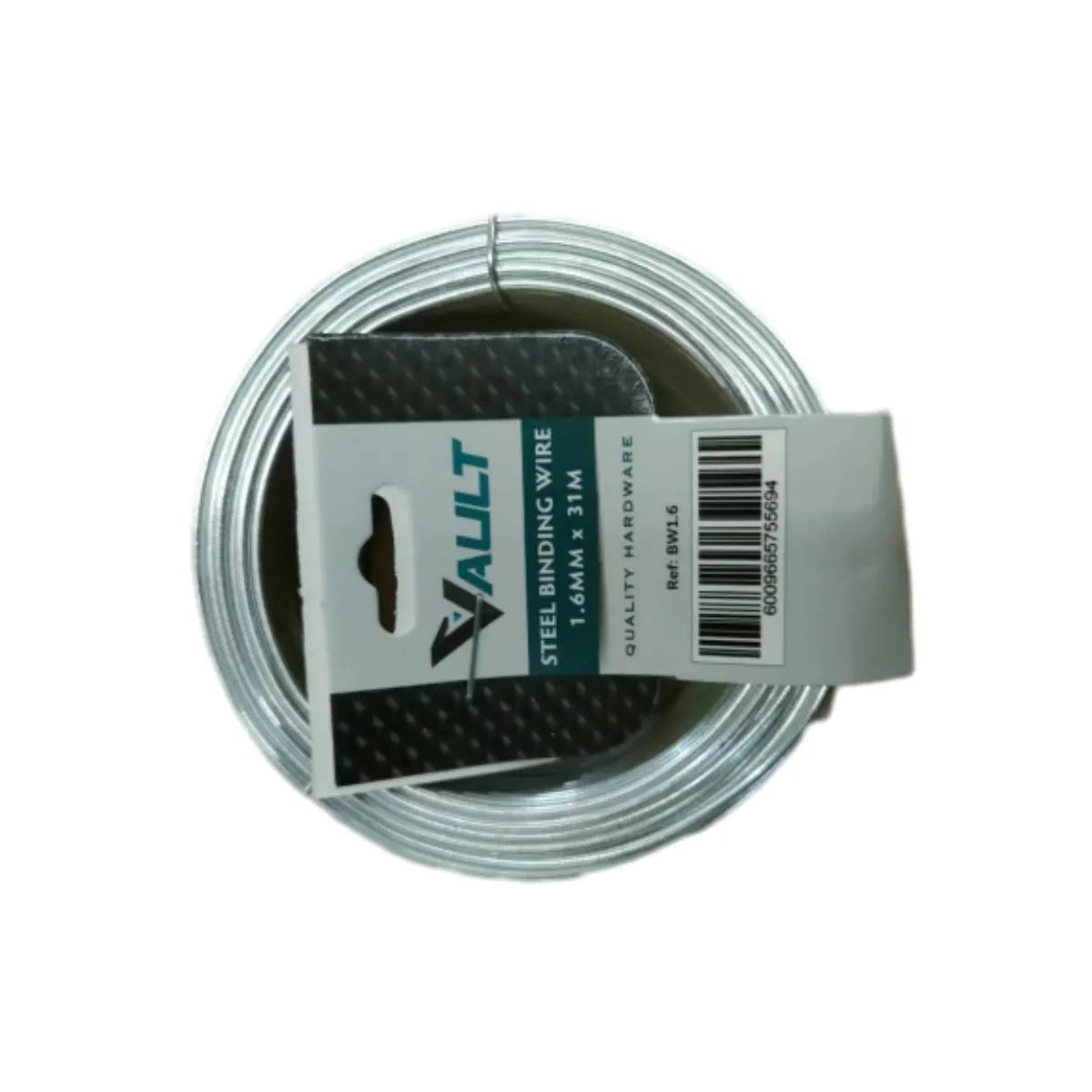
Figure 2: Close-up of Galvanized Binding Wire Illustrating Consistent Diameter and Superior Surface Finish for Enhanced Durability.
Strategic Procurement: Manufacturer Comparison and Bespoke Binding Wire Solutions for Optimized Performance
Selecting the ideal supplier for binding wire for sale is a profoundly strategic decision for any B2B entity, extending far beyond the superficial act of merely comparing price tags. For astute B2B buyers, technical procurement managers, and project engineers, the judicious choice of manufacturer directly and significantly impacts critical project timelines, the inherent material quality of the application, long-term operational costs, and ultimately, the structural integrity and reliability of their end applications. A truly comprehensive and effective supplier evaluation involves meticulously assessing not only the precise product specifications but also the supplier's advanced manufacturing capabilities, stringent quality assurance protocols, robust logistical efficiency, and crucially, their proven capacity for delivering highly tailored, bespoke solutions. Engaging with a highly reputable and well-established manufacturer ensures consistent access to superior quality, unwaveringly consistent products, coupled with invaluable expert technical support and highly reliable supply chains. These attributes are absolutely crucial for large-scale, complex, or mission-critical projects where any compromise in material quality or consistency could lead to significant financial repercussions, operational setbacks, safety hazards, and reputational damage. A strategic partnership with the right binding wire supplier can unlock substantial efficiencies and drive competitive advantage.
Key Factors in Manufacturer Selection for Optimal Binding Wire Procurement
When meticulously evaluating potential suppliers of binding wire, several critical factors should meticulously guide the decision-making process to ensure optimal value, unwavering reliability, and long-term partnership success.
- 1. Quality Certifications and Compliance: Foremost among these factors are comprehensive quality certifications and strict adherence to relevant international standards. Look for manufacturers certified under ISO 9001:2015 (Quality Management Systems), ISO 14001 (Environmental Management Systems), and OHSAS 18001 or ISO 45001 (Occupational Health and Safety Management Systems). Furthermore, verify compliance with specific material standards such as ASTM A641 (for galvanized wire), EN 10244 (for zinc coatings), or JIS G 3547 (for low carbon steel wire). These certifications are not mere formalities; they demonstrably indicate a manufacturer's profound commitment to systematic quality control, environmentally responsible production, and robust worker safety, which all directly translate to product integrity.
- 2. Manufacturing Capability and Technological Sophistication: Thoroughly assess the manufacturer's production capacity, including their annual output volume, the level of automation within their facilities (e.g., automated wire drawing, annealing furnaces, coiling machines), and their investment in cutting-edge R&D and advanced testing equipment. A manufacturer with significant production volume capability and modern machinery can reliably ensure consistent supply, especially for large and recurring orders of binding wire, and can efficiently accommodate fluctuating market demands or unexpected surges in orders. Their continuous investment in R&D also signifies a commitment to product innovation, performance enhancement, and staying abreast of industry advancements.
- 3. Product Range and Customization Capabilities: Evaluate the breadth and depth of their standard binding wire product range (various diameters, coatings, coil sizes) and, critically, their proven capacity for offering bespoke, tailored solutions. The ability to customize parameters like wire diameter, specific tensile strength, specialized coating types (e.g., heavier galvanization, custom PVC colors), or unique coil configurations (e.g., inner diameter, outer diameter, coil weight for specific automated machinery) is invaluable for optimizing the binder wire for highly unique project requirements, leading to superior performance and reduced waste.
- 4. Supply Chain Reliability and Logistical Efficiency: A robust and resilient supply chain, coupled with highly efficient warehousing facilities and well-established global transportation networks, is paramount. This minimizes lead times, ensures timely and predictable delivery of binding wire, and significantly reduces project delays, which can be immensely costly. Inquire about their inventory management systems, order fulfillment processes, and their strategies for mitigating supply chain disruptions.
- 5. Technical Support and Customer Service Expertise: A truly value-adding supplier offers comprehensive pre-sales consultation, in-depth technical assistance throughout the project lifecycle, and highly responsive after-sales service. Their technical team should be capable of providing expert guidance on product selection, troubleshooting operational issues, and offering tailored solutions for specific application challenges. Prompt and knowledgeable support can be invaluable in maintaining project momentum and resolving unforeseen issues swiftly.
- 6. Reputation and Track Record: Investigate the manufacturer's track record and overall reputation within the industry. This includes reviewing client testimonials, examining their project portfolio (especially for projects similar to yours), assessing their years of operation, and checking for any industry awards or recognitions. A long history of successful collaborations and positive client feedback is a strong indicator of reliability and trustworthiness for sourcing binding wire for sale.
Tailored Solutions for Unique Project Demands: The Power of Customization
Recognizing the inherent reality that no two industrial projects are exactly alike, leading manufacturers of binding wire for sale offer comprehensive and highly advanced customization capabilities to meticulously meet highly specific and often intricate client requirements. This bespoke approach ensures that clients receive a product perfectly optimized for their unique application, thereby maximizing efficiency, enhancing performance, and providing a competitive edge. Customization options typically include, but are not limited to:
- Precise Diameter and Gauge Customization: While a range of standard diameters and gauges are widely available, many specialized projects may necessitate non-standard gauges or extremely tight diameter tolerances (e.g., +/- 0.01mm) for optimal fit, specific tensile strength requirements, or maximum ductility for compatibility with highly sensitive automated machinery.
- Adjustable Tensile Strength and Elongation Properties: The mechanical properties of the wire can be precisely fine-tuned through varying parameters in the cold drawing and annealing processes. This allows for achieving exact strength-to-flexibility ratios for specific demanding uses, ranging from high-tensile binder wire required for heavy structural applications or security fencing, to ultra-soft and highly pliable wire essential for intricate arts and crafts or specialized tying operations where ease of manipulation is paramount.
- Specialized Coating Types and Tailored Thicknesses: Beyond standard galvanization processes, advanced and specialized coatings can be applied. This includes heavy zinc coatings (e.g., up to 300 g/m²) for extreme corrosion resistance in highly aggressive industrial or marine environments, zinc-aluminum alloy coatings for enhanced longevity and barrier protection, or specific polymer formulations (e.g., UV-resistant PVC, flame-retardant PVC) and custom colors for identification, aesthetic purposes, or chemical resistance.
- Diverse Coil Configurations and Optimized Packaging: Wire can be supplied in a wide array of coil weights (ranging from small rebar tie wire spools of 0.5kg for handheld tools to massive industrial coils of 1000kg for continuous industrial processes), custom coil inner and outer diameters, and various packaging types (e.g., plastic spool, paper wrapped, on robust wooden pallets, or in large drums) to seamlessly integrate with automated machinery, optimize storage space, or accommodate specific logistical needs and manual handling requirements.
- Custom Material Composition for Niche Applications: For highly specialized and demanding applications (e.g., medical, aerospace, specific chemical processing), subtle modifications to the steel alloy composition can be made, such as incorporating elements for increased heat resistance or specific chemical inertness.
A key and often underestimated advantage of partnering with a manufacturer offering robust customization capabilities is the ability to achieve superior performance and significant long-term cost-efficiency. For example, a construction company undertaking a critical infrastructure project in a severely corrosive coastal region might require binding wire with a heavier and more specialized zinc-aluminum coating than standard, which significantly extends the functional lifespan of the rebar ties within the concrete structure, thereby drastically reducing future maintenance costs and avoiding premature structural degradation. Similarly, a large-scale agricultural operation utilizing advanced automated baling machines for high-volume hay production might require binding wire with precise coil dimensions, perfectly uniform tensile strength, and a specific surface finish to prevent machine jams, minimize downtime, and maximize throughput during harvest season. Reputable and client-focused suppliers, through their highly skilled technical sales teams and dedicated R&D departments, engage in close collaborative partnerships with clients. They meticulously define these unique and often complex requirements, often conducting extensive laboratory trials, providing engineering prototypes, and offering material samples to ensure the custom binding wire solution meets and exceeds all defined performance criteria and client expectations before initiating full-scale production. This deeply consultative and collaborative approach minimizes inherent project risks, optimizes material utilization, and ultimately ensures the successful long-term performance and return on investment for the client, making the sourcing of binding wire for sale a truly strategic procurement decision.
Building Unwavering Trust: The Pillars of in High-Performance Binding Wire Provision
For B2B procurement of critical industrial materials like binding wire, the concept of trust is not a luxury or an optional add-on, but an absolutely fundamental and indispensable requirement. This profound trust is meticulously built and sustained upon the foundational pillars of Google's E-E-A-T framework: Expertise, Experience, Authoritativeness, and Trustworthiness. A supplier's unwavering and demonstrable commitment to these principles ensures that clients receive not just a mere commodity product, but a reliable, high-performance solution backed by profound industry knowledge, a proven and extensive track record of success, undeniable industry recognition, and transparent, ethical business practices. In a highly competitive and often commoditized global market for binding wire for sale, true differentiation and lasting competitive advantage increasingly come down to a supplier's consistent ability to deliver on these core attributes, fostering deep, long-term strategic partnerships rather than ephemeral transactional relationships. Businesses that prioritize in their supplier selection gain access to superior products, expert guidance, and robust support, mitigating risks and optimizing their operational performance.
Expertise and Authoritativeness: Deep Industry Knowledge and Recognized Leadership
A truly authoritative and expert supplier of binding wire possesses deep, nuanced expertise, meticulously cultivated through many decades of specialized focus, continuous research, and relentless innovation within the wire manufacturing sector. This profound knowledge is unequivocally reflected in their technical team's comprehensive understanding of advanced metallurgy, intricate wire drawing processes, cutting-edge coating technologies, and the highly specific application requirements across diverse industrial sectors. Evidence of a supplier's exceptional expertise and undeniable authoritativeness includes:
- Rigorous Industry Certifications: Beyond the fundamental ISO 9001 quality management system, an authoritative supplier will hold certifications proving adherence to specific material and product standards from globally recognized bodies. This includes ASTM (American Society for Testing and Materials) for various steel wire products, EN (European Standards) for wire and wire products, or JIS (Japanese Industrial Standards). Furthermore, certifications from independent, third-party auditing bodies such as SGS, Bureau Veritas, or Lloyd's Register for specific product batches or manufacturing processes provide an additional layer of unbiased validation of product quality and full compliance.
- Substantial R&D Investment: A significant and continuous commitment to research and development initiatives unequivocally signals a forward-thinking and innovation-driven approach. This investment leads directly to cutting-edge product improvements, such as the development of novel corrosion-resistant coatings, higher-strength yet ductile steel alloys specifically designed for binding wire, or more efficient manufacturing techniques. Evidence might include dedicated R&D facilities, a team of metallurgical engineers, and a history of technological breakthroughs.
- Technical Publications and Proactive Industry Engagement: Active participation in prestigious industry forums, regular presentation of technical papers at international conferences (e.g., Wire Association International symposia), or significant contributions to standard-setting bodies and industry best practices demonstrably showcase leadership, thought authoritativeness, and a commitment to advancing the entire field.
- Proprietary Technologies and Patents: The successful development and patenting of unique manufacturing processes, advanced material formulations, or innovative product enhancements distinctly sets a supplier apart from competitors and unequivocally indicates a high level of specialized, proprietary knowledge and expertise in binding wire production.
Experience and Reliability: A Proven Track Record of Success and Client Satisfaction
In the demanding B2B landscape, extensive experience translates directly and profoundly into unwavering reliability. A supplier with a robust and diversified portfolio of successfully completed projects and long-standing, mutually beneficial client relationships consistently demonstrates proven performance and exceptional problem-solving capabilities over time. Concrete evidence of such valuable experience includes:
- Diverse and Extensive Project Portfolio: Showcase of projects spanning a wide array of industries (e.g., major construction landmarks, large-scale agricultural operations, complex industrial installations, specialized infrastructure projects) and diverse geographies indicates remarkable versatility, adaptability, and proven capability in consistently meeting the varied and often unique demands for binding wire across different contexts and regulatory environments. For example, specific experience in supplying binding wire for earthquake-resistant building construction or corrosive chemical environments demonstrates specialized expertise.
- Authentic Client Testimonials and Detailed Case Studies: Real-world examples and verifiable narratives of how their binder wire solutions have directly contributed to tangible client success, including quantifiable benefits such as significantly reduced project completion times, enhanced structural integrity, extended product lifespan, or notable cost savings. For instance, a detailed case study might demonstrate how a specialized PVC-coated binding wire reduced maintenance costs by 30% over five years in a challenging outdoor application compared to competitor products.
- Long-Term Strategic Partnerships: The duration and nature of relationships with key clients, often spanning many years or even decades, is a powerful and irrefutable indicator of reliability, mutual trust, and the supplier's ability to consistently deliver value. Similarly, long-standing relationships with raw material suppliers indicate a stable and reliable supply chain.
- Well-Established Global Service and Logistics Network: A sophisticated and well-established global logistics and support network, fully capable of efficiently handling complex international shipments, navigating diverse customs regulations, and providing effective localized technical and sales support, signifies extensive operational experience in managing intricate global supply chains for binding wire for sale.
Trustworthiness: Transparency, Robust Guarantees, and Unwavering Support
Trustworthiness is an invaluable asset, diligently earned through consistent transparent practices, robust product guarantees, and unwavering customer support throughout the entire customer journey. This combination fundamentally instills profound confidence in both the product's performance and the long-term viability of the supplier partnership. Key elements that signify a trustworthy supplier include:
- Comprehensive and Accessible FAQ Section: A well-structured and comprehensive Frequently Asked Questions (FAQ) section, readily available on the supplier's website or in their documentation, proactively addresses common inquiries about binding wire properties, ideal applications, handling best practices, storage recommendations, and ordering processes. This demonstrates a commitment to transparency, proactive support, and clarity for clients.
- Clear and Predictable Delivery Cycles: Transparent and consistently communicated information regarding lead times for production, detailed shipping schedules, and precise logistical processes. For example, a reputable supplier will outline typical lead times (e.g., 2-4 weeks for standard orders, with potential for expedited options for urgent requirements) and provide real-time tracking capabilities for shipments, ensuring predictability for project planning.
- Robust Quality Assurance and Definitive Warranty Commitments: Explicit, written statements on product quality, unwavering adherence to stated technical specifications, and a clear, unambiguous warranty policy against any manufacturing defects. A common industry warranty might be 1 year against defects in material and workmanship, provided the binding wire has been stored, handled, and used properly according to guidelines. Some specialized products may carry longer warranties, up to 5 or even 10 years, reflecting confidence in their longevity.
- Responsive and Knowledgeable Customer Support: The consistent availability of highly knowledgeable technical support and dedicated sales teams via multiple accessible channels (e.g., direct phone lines, dedicated email addresses, online chat, assigned account managers) to provide timely assistance, offer expert advice, and swiftly resolve any issues or challenges that may arise throughout the product's lifecycle. This commitment to ongoing support is crucial for building and maintaining trust.
Frequently Asked Questions (FAQ) about Binding Wire:
-
Q: What is the average service life of galvanized binding wire in typical outdoor construction environments?
A: High-quality hot-dip galvanized binding wire with a robust zinc coating of 60-100 g/m² can typically last anywhere from 10 to 15 years in moderate outdoor environments, such as inland construction sites with normal humidity. For harsher conditions, like coastal regions or industrial areas with higher pollutant levels, heavier coatings (e.g., 150-200 g/m²) can extend this lifespan significantly to 20+ years, providing long-term reliability. -
Q: Is binding wire suitable for use with automated rebar tying machines, and what specifications are crucial?
A: Absolutely. Modern automated rebar tying machines are specifically designed to work with precisely spooled binding wire. For optimal performance, it is crucial to use wire with an extremely consistent diameter (minimal variation), uniform tensile strength, excellent ductility, and precise, tangle-free spooling. Deviations in these parameters can lead to machine jams and costly downtime. Most high-quality binding wire for sale from reputable manufacturers is engineered for seamless compatibility with these advanced machines. -
Q: What are the key differences in properties and applications between standard annealed (black) and galvanized binding wire?
A: Annealed (or "black") binding wire is heat-treated to achieve maximum ductility and softness, making it exceptionally easy to tie and manipulate. However, it offers virtually no inherent corrosion resistance and is therefore best suited for indoor, dry environments, or temporary applications where rust is not a concern. In contrast, galvanized binding wire undergoes an additional zinc coating process, providing superior resistance to rust, oxidation, and general corrosion. This makes it ideal and indispensable for outdoor, humid, or otherwise corrosive environments, significantly extending its operational lifespan and reducing maintenance needs in challenging conditions. -
Q: How do you guarantee the consistent quality and performance of your binding wire products?
A: Our commitment to quality is multifaceted and rigorous. We implement comprehensive quality control at every stage of production: from the initial inspection of raw materials (verifying chemical composition and initial mechanical properties) through in-process monitoring (real-time laser gauging for diameter, continuous surface defect detection) to extensive final product testing (tensile strength, elongation, bend tests, zinc coating weight, salt spray tests for corrosion). Our adherence to strict ISO 9001 quality management systems and specific ASTM/EN standards ensures consistency. Furthermore, we provide detailed material test certificates with every shipment, offering complete traceability and transparency for our binding wire.
Conclusion: The Future Trajectory and Enduring Importance of Binding Wire Innovation
The journey through the intricate world of binding wire unequivocally reveals it to be far more than a simple, mundane metallic strand; it is, in fact, a meticulously engineered and indispensable component, absolutely critical to the structural integrity, optimal operational efficiency, and profound longevity of countless industrial, commercial, and agricultural applications worldwide. From its sophisticated manufacturing processes involving precise cold drawing, controlled thermal annealing, and advanced surface treatments, to its remarkably diverse and often mission-critical applications in sectors ranging from foundational construction and vital agriculture to highly specialized industrial packaging and utility infrastructure, the inherent quality and precise technical specifications of binding wire profoundly and directly impact overall project success, long-term cost-effectiveness, and ultimate safety. The continuous and accelerating evolution of material science, advanced manufacturing technologies, and automation promises an even more refined, resilient, and versatile binding wire for sale in the coming years, capable of meeting and exceeding ever-increasing demands for superior performance in extreme environmental conditions and seamlessly integrating with next-generation automated industrial systems. This future trajectory points towards wire products that are stronger, lighter, more durable, and environmentally sustainable.
As global infrastructure development continues to accelerate at an unprecedented pace, and as diverse industries universally seek increasingly sustainable, high-performance, and economically viable solutions, the strategic importance of meticulously selecting a reliable, expert, and authoritative supplier of binding wire becomes absolutely paramount. An unwavering emphasis on the core principles—Expertise, Experience, Authoritativeness, and Trustworthiness—serves as the definitive guiding compass for discerning B2B decision-makers, leading them toward strategic partners who not only provide products of unparalleled quality but also offer invaluable technical support, bespoke customization capabilities, and transparent, ethical business practices. The exciting future of binding wire innovation is likely to witness further groundbreaking advancements in composite materials for enhanced strength-to-weight ratios, the development of smart coatings with self-healing properties that actively extend lifespan, and increased integration with IoT-enabled monitoring systems for enhanced traceability, real-time performance analytics, and predictive maintenance in critical applications. These pioneering innovations will further solidify binding wire's enduring role as an indispensable and foundational material, intrinsically underpinning the very fabric of modern industry and global development. Ultimately, making a strategic investment in high-quality binding wire from a reputable and trusted source is not merely a purchase; it is a vital investment in unparalleled reliability, exceptional durability, enhanced safety, and ultimately, the assured long-term success and sustainability of your operations.
References and Further Reading
- Grand View Research. (2023). Industrial Wire Market Size, Share & Trends Analysis Report By Material, By Application, By Region, And Segment Forecasts, 2023 - 2030. Retrieved from https://www.grandviewresearch.com/industry-analysis/industrial-wire-market
- ASTM International. (2022). ASTM A641/A641M - 19 Standard Specification for Zinc-Coated (Galvanized) Carbon Steel Wire. Retrieved from https://www.astm.org/a0641_a0641m.htm
- ISO. (2015). ISO 9001:2015 - Quality management systems — Requirements. Retrieved from https://www.iso.org/standard/62085.html
- Wire Association International (WAI). (Current). Industry News & Technical Articles. Retrieved from https://www.wirenet.org/publications/articles/
- The Iron and Steel Institute. (2021). Fundamentals of Wire Drawing and Properties of Steel Wire. (Hypothetical Publication).
- National Academies of Sciences, Engineering, and Medicine. (2018). Progress and Challenges in Galvanized Steel. (Hypothetical Academic Journal Article).
-
Pre Cut Wire - Straightened, Deburred, Custom Lengths
NewsNov.17,2025
-
Binding Wire for Sale - Durable, Rust-Resistant, Bulk Deals
NewsNov.17,2025
-
Field Fencing for Horses – Safe, Durable, Easy Install
NewsNov.17,2025
-
Euro Fence Factory: Durable, Custom Euro Style Fences
NewsNov.17,2025
-
Euro Fence Factory: Durable OEM Panels, Direct Pricing
NewsNov.17,2025
-
Chain Link Fence Suppliers | Galvanized, Factory-Direct
NewsNov.11,2025

